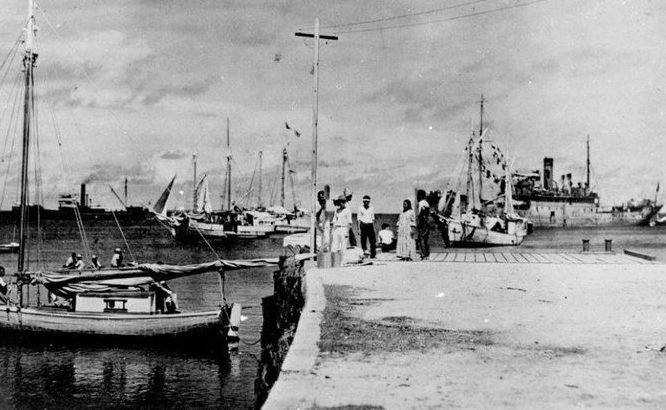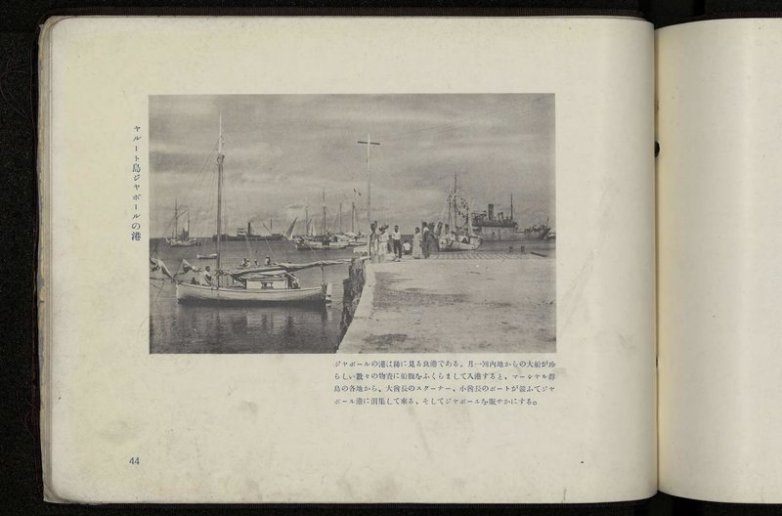
U.S. National Archives, Records of the Office of Naval Intelligence The undated photo found by U.S. Treasury agent Les Kinney
The photo at the center of the History Channel’s recent Amelia Earhart special appears to have been published in a book two years before Earhart’s mysterious disappearance, according to NPR.
A Japanese military history buff, Kota Yamano, who goes by @baron_yameneko on Twitter, has found library records showing that the photo in question (above), was origianlly published in a photo book in Palau under Japanese rule in 1935. Earhart and her Navigator Fred Noonan disappeared over the western Pacific on July 2, 1937, near the end of their attempt at a history-making flight around the world.
“I have never believed the theory that Earhart was captured by the Japanese military, so I decided to find out for myself,” Yamano told the Guardian. “I was sure that the same photo must be on record in Japan. The photo was the 10th item that came up. I was really happy when I saw it. I find it strange that the documentary makers didn’t confirm the date of the photograph or the publication in which it originally appeared. That’s the first thing they should have done.”
Photo that Yamano found:

National Diet Library Digital CollectionsA photograph of Jaluit Atoll was published in Umi no seimeisen : Waga nannyou no sugata, a photo book in Japan’s national library. The book’s publication date is 1935.
The History Channel documentary, Amelia Earhart: The Lost Eveidence, made the claim that Earhart and Noonon ended up in Japanese custody based on an undated photograph discovered in the U.S. national archives. According to NPR, former U.S. Treasury agent Les Kinney found the photo in a box of papers from the Office of Naval Intelligence while scouring from evidence regarding Earhart’s disappearance that may have been missed.
In the History Channel special, some analysts argued that the photo showed Earhart and Noonan. They identified the ship in the background as the Koshu Maru. Yamano identified the ship as the Koshu, which the Japanese seized in World War I, rather than the Koshu Maru, which was launched in 1937.
The History Channel told NPR that it has “a team of investigators exploring the latest developments about Amelia Earhart and we will be transparent in our findings.”